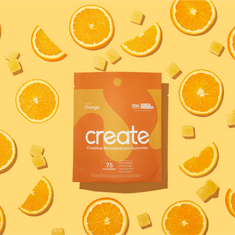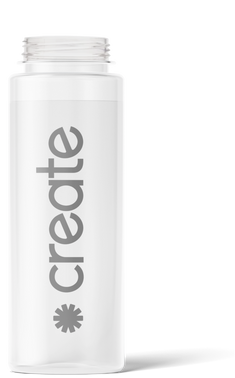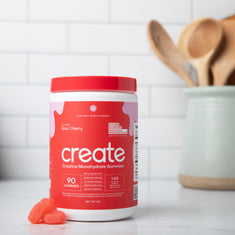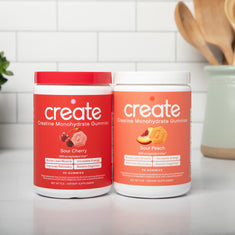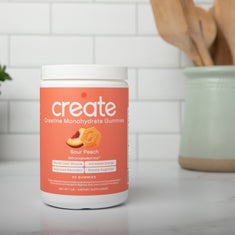Maximizing Muscle Mass: The Science Behind the Creatine Loading Phase
Creatine is one of the most famous supplements on the market today, and for a good reason. Supplementing with creatine can help increase muscle mass, strength, and power output. But if you want to maximize your results from creatine supplementation, it's important to understand the science behind its use. This includes understanding how best to take advantage of a "loading phase," which helps you get more out of your creatine supplementation in less time. In this article, we'll discuss the loading phase and why it works so well for maximizing muscle mass gains when combined with regular creatine use.
Role of Creatine in Muscle Building and Athletic Performance
The body naturally produces creatine, an amino acid, but it's also available as a dietary supplement. It is important in providing energy to muscle cells during high-intensity exercise and helps improve recovery between workouts. Supplementing with creatine has increased muscle mass and strength gains when combined with regular workouts and a healthy diet.
Additionally, creatine monohydrate supplementation has increased power output during activities such as sprinting and weightlifting. This benefit could be particularly beneficial for athletes and everyday gym-goers alike. This is because creatine helps regenerate the energy stores of muscle cells, known as ATP, more quickly than it would be naturally. This allows for more explosive movements and a quicker recovery period.
Purpose of a Loading Creatine Phase in Boosting Athletic Performance
A creatine loading phase is when you take higher doses of creatine than usual to saturate your muscle cells with the supplement, leading to more rapid gains in performance. During this period, it's recommended to take 20-25g of creatine per day for 5-7 days. After this initial loading phase, you can then switch to a maintenance dose of 3-5 grams per day. This loading phase helps achieve higher levels of creatine in the muscles more quickly than regular supplementation alone, resulting in faster muscle mass and strength improvements.
In addition to improving performance, the creatine loading phase can also enhance muscle recovery. Studies have shown that taking higher doses of creatine during this time can help reduce muscle soreness and fatigue, allowing you to train harder for longer periods.
Benefits & Importance of a Creatine Loading Phase
The creatine loading phase is an important part of any supplemental program. It helps to quickly saturate the muscles with creatine, allowing for faster performance and muscle mass gains. Additionally, it can help reduce soreness and fatigue, allowing you to train harder for longer periods.
Some of the other benefits of a creatine-loading phase include the following:
Rapid Increase in Muscle Phosphate Creatine Stores
The creatine loading phase is designed to rapidly increase muscle stores of phosphocreatine, a molecule that plays an important role in providing energy for high-intensity activities. Phosphocreatine is a storage depot of energy that can be accessed quickly and used to fuel intense bursts of muscle activity. When supplementing with creatine during the loading phase, your muscles become saturated with the supplement, rapidly increasing phosphocreatine stores.
Enhanced Muscle Recovery
Higher muscle creatine levels during the loading phase can also help improve muscle recovery. In addition to increasing muscle phosphocreatine concentrations, it can reduce inflammation and oxidative stress. This can help speed up recovery after intense exercise and reduce muscle soreness.
Improved Athletic Performance
A load creatine supplement can also lead to improved athletic performance. Studies have shown that taking higher doses of creatine during this period can increase power output and reduce fatigue, allowing you to push your body harder for extended periods. This is particularly beneficial for athletes and everyday gym-goers looking to improve their performance.
Convenience
The muscle creatine loading phase is a convenient way to get the maximum benefit from supplementation. Rather than taking smaller doses of creatine throughout the day, you can take a higher dose in one sitting, allowing for faster saturation of muscle cells with the supplement.
Risks and Potential Side Effects of a Creatine Loading Phase
While the creatine loading phase is generally safe, there are some potential threats and side effects to consider. These include:
Gastrointestinal Distress
The higher doses of creatine taken during the loading phase can cause gastrointestinal distress, such as nausea, bloating, indigestion, stomach cramps, and diarrhea. This can be due to increased osmotic pressure in the intestines caused by increased creatine levels in the body. High doses of creatine can also interfere with the absorption of other supplements, such as iron and calcium.
Water Retention
The creatine loading phase can also lead to increased levels of water retention in the body, which can cause an increase in body weight and bloat. This is caused by the supplement drawing more water into the muscle cells, increasing their size and hydration levels.
Muscular Cramps
High doses of creatine can also lead to muscular cramps, especially when combined with dehydration or electrolyte imbalances. This is due to the supplement drawing water out of other cells in the body and into the muscles, potentially leading to electrolyte imbalances that can cause cramping.
Expert Advice for Safe and Effective Use of a Creatine-Loading Phase
It is important to follow an expert's advice when taking a creatine-loading phase. A qualified healthcare professional can guide how to safely and effectively use the supplement, as well as provide advice on other supplements that may be beneficial during this period. Additionally, they can help monitor your progress and adjust your dosage if necessary. It is also essential to ensure you are drinking adequate amounts of water when taking creatine, as this can help reduce the risk of side effects.
Remember that the creatine loading phase should be done with a well-balanced diet and regular exercise program. Supplementation alone cannot provide all the benefits associated with increased performance and muscle growth. Therefore, it is important to also focus on eating a healthy diet and getting adequate exercise to maximise the effects of creatine supplementation.

